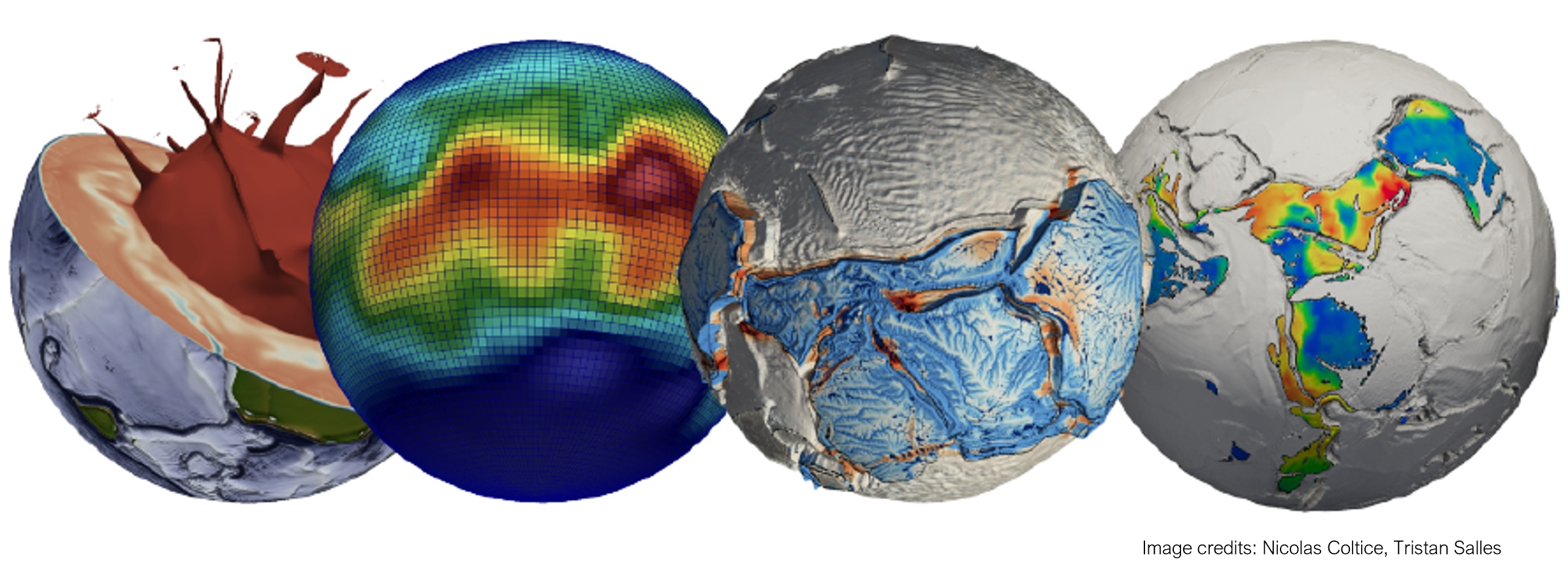Planetary evolution
Is it possible to “replay the tape of life” by simulating the emergence and impact of complex life on earth? Ecosystems evolved from chemical reactions into emergent systems of interactions between living organisms. The emergence of ecosystems is expected to be intrinsically related with the dynamic of Earth’s physical conditions. Evidence of strong associations between tectonics, climate, and life indicate that the dynamics of Earth’s surface determine the condition for species diversification and their co-evolution. But life, by interacting with the land surfaces, oceans and atmosphere can also reshape the physical conditions on the planet thereby establishing complex feedbacks. The study of life evolution in relation with the physical environment has been mainly coming from a top-down approach: the understanding of the processes that shape the diversity of life is gained by disassembling the current complexity. Typically, field measurements offer phenomenological associations, and inferences are made on the functioning and evolution of these systems, for instance the use of phylogenies to infer the evolution of lineages and their drivers , and how assemblages shape ecosystem processes. However, a disassembly approach provides only limited understanding about how the components work together to form a functioning system.
To study the dynamic of an entire planetary system with life, bottom-up simulation-based approaches are developed as an alternative. In those simulations, the mechanisms of a system are explicitly modeled in-silico to study how coupled dynamics emerge between the components of a system. Earth system models are for instance used to simulate planetary climate and vegetation dynamics to provide insight in the working of the earth system and inference about the environmental conditions in the past. Connecting geodynamic with the diversification of life has been recently facilitated by the development of realistic models of Earth interior and surface. The state-of-the-art geodynamic simulations allow to simulate planetary dynamics producing tectonic and volcanic features and elevation distribution alike those observed on earth. Moreover, fast climate models can link atmospheric chemical composition with physical processes to result in the accurate modeling of temperature and precipitation over multiple time periods. Recent advances in mantle models and climate models on top can allow the simulation of virtual planets offering similar properties as Earth to study the mechanisms of earth biosphere formation.
Computer simulation allows simulating the possible pathways of life developments thereby also quantifying effects and interactions of different physical, chemical and biological parameters. The aim to reproduce the dynamic of living organisms in silico dates to decades old research, which has now accelerated thanks to increasing computing capacity. Among the early simulators, “Game of Life”, also known simply as “Life”, has been coded as a cellular automaton devised by the British mathematician John Horton Conway in 1970. It is a zero-player game, meaning that its evolution is determined by its initial state, requiring no further input. Further life evolution systems such as Tierra and Avida simulate the evolution of “digital organisms,” using a formal framework, which has provided a deeper understanding of features of living systems such as robustness, the evolution of complexity, evolutionary rates, or mass extinctions. A new generation of more realistic models integrate spatially explicit dispersal with eco-evolutionary dynamics and speciation. One of the main interests in building such a broad coupled mechanistic model is the ability to change the general conditions of the model to simulate alternative behaviour, in the case of planet with physical conditions slightly deviating from earth.
